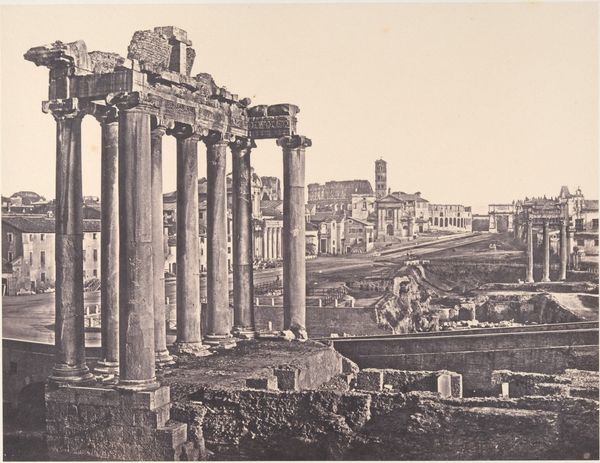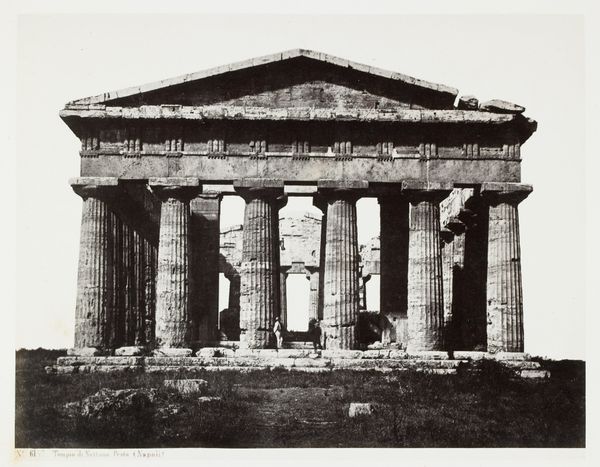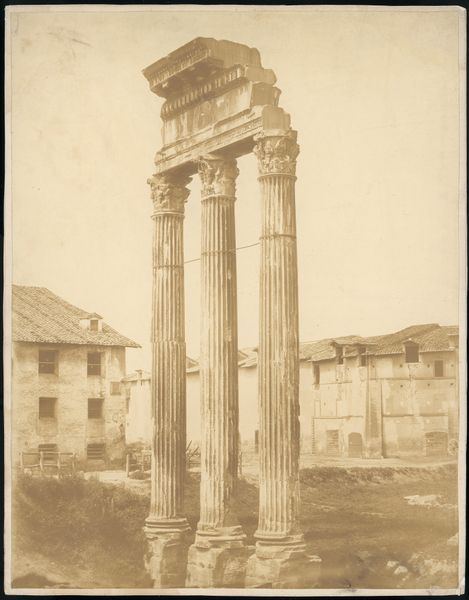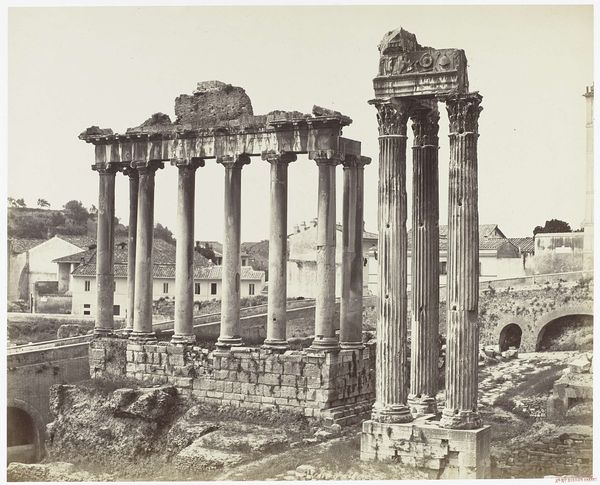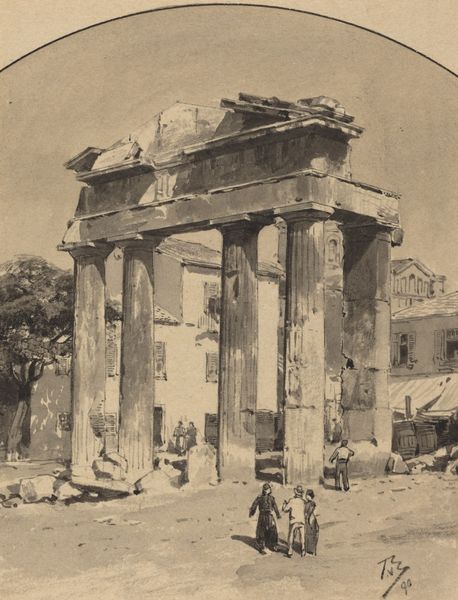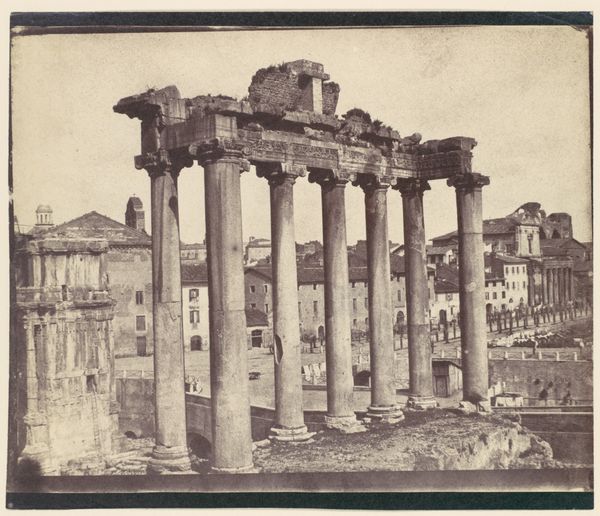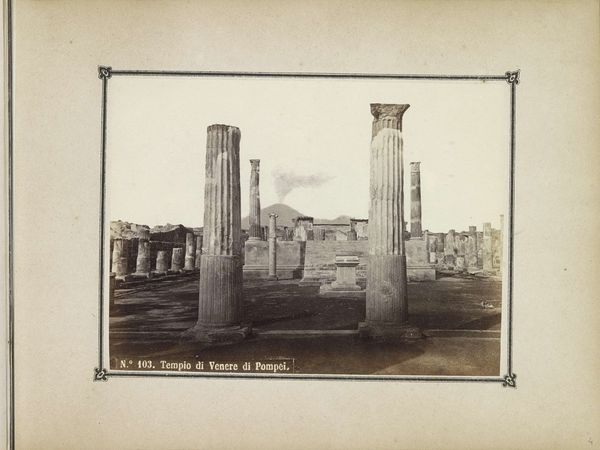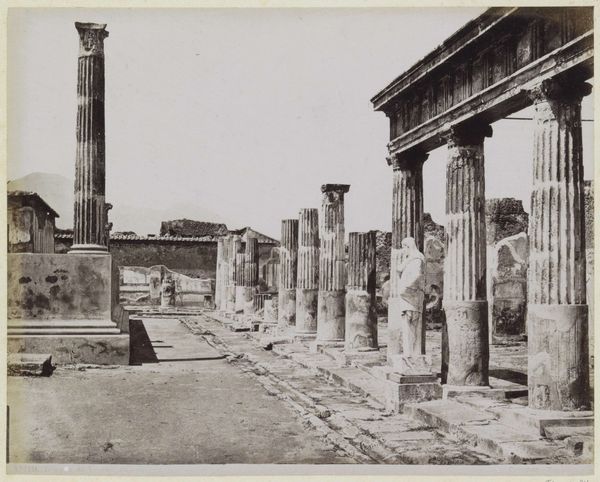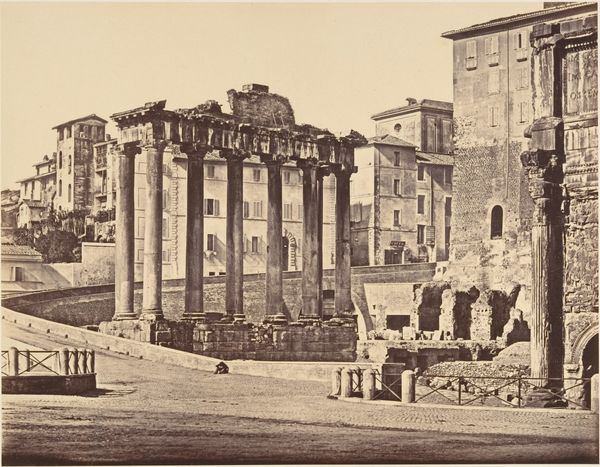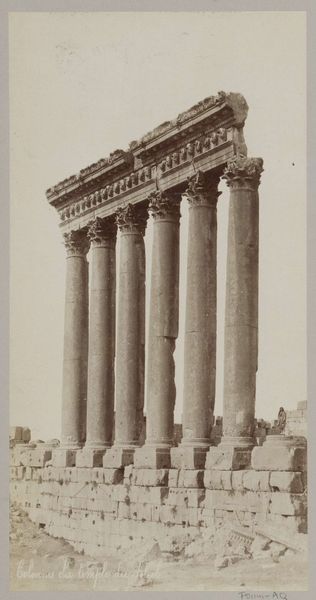
photography, architecture
#
landscape
#
photography
#
ancient-mediterranean
#
cityscape
#
architecture
Dimensions: Image: 11 5/16 × 8 11/16 in. (28.7 × 22 cm) Sheet: 18 1/2 × 12 1/8 in. (47 × 30.8 cm)
Copyright: Public Domain
Editor: This is "Rovine del Foro," a photograph by Eugène Constant, taken sometime between 1848 and 1852. What strikes me immediately is how still and monumental everything feels, almost like a stage set for a forgotten drama. It's grand but somehow melancholy. What do you see in it? Curator: I feel that melancholy too. It whispers of time’s relentless passage. Eugène Constant has captured Rome’s essence - a city layered with history. I am immediately drawn to the pillars; they frame the story of Roman glory juxtaposed with encroaching modernity. It’s more than just architecture, isn’t it? What feelings does the ruin evoke? Editor: Definitely, it's the contrast. The foreground is so earthy and disrupted, and then your eye travels up to these enduring, almost defiant, classical forms. Curator: Precisely! See how Constant used light and shadow. Notice the buildings beyond the pillars: they almost seem ghostly compared to the sharp stone. What do you think he was aiming to say about history's persistence and vulnerability through that contrast? Editor: I guess, maybe that even in ruins, the past casts a long shadow on the present, and it will inevitably succumb to the passage of time. Curator: Beautifully put. And that makes me reflect… How will our time be seen in centuries to come? Perhaps in crumbling structures and fading photographs… a thought. Anything that stands out to you about Constant's technique in creating these tonal effects? Editor: I suppose given the date, this early experiment in photography would be challenging technically. Curator: Exactly! He was painting with light, forging a vision of Rome that’s both a document and a poetic statement. Thank you for helping me think through the vision.
Comments
No comments
Be the first to comment and join the conversation on the ultimate creative platform.
